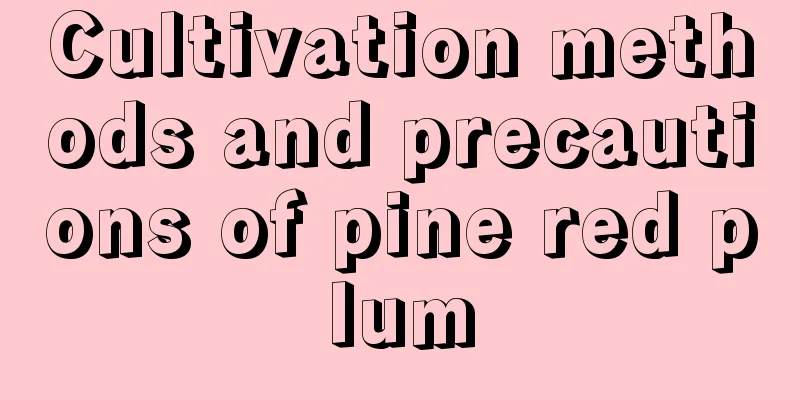Cultivation methods and precautions of lollipop roses

|
Lollipop rose is very easy to grow. It likes loose, fertile, moist, ventilated, well-drained slightly acidic soil. It can be planted in a mixture of leaf mold, garden soil, river sand and an appropriate amount of fermented cake fertilizer. Just pay attention to watering it regularly. How to grow lollipop rosesTo grow a lollipop rose, you have to let it sprout. When the sprout grows tall, you can use it as branches and then top it in time. The pot used for the lollipop rose should have good drainage. At the same time, you can use liquid fertilizer with good fermentation ingredients to water it for fertilizer supplement. Adding it every time you water it can meet its needs, about once every half a month is enough. 1. Weatherproof The biggest threats to lollipop roses are strong winds and rainy days. There is nothing to worry about when it rains, as the branches generally will not be broken. However, protection must be taken on windy days because the lollipop roses have large heads and can easily be broken in half in strong winds, and then everything will be gone. 2. Remove rootstock buds in time During the maintenance of lollipop roses, new buds often sprout from the bottom or main stem. These are rootstock buds and should be removed in time, otherwise they may rob the grafted buds of nutrients, causing the grafted lollipop rose branches to grow weaker. 3. Soil permeability When growing lollipop roses at home, it is important that the soil in the pot is loose and breathable. Because there is not much soil in the pot, loose and breathable soil is conducive to the spread of its roots and deep absorption of nutrients. 4. Adequate lighting Lollipop roses like sufficient sunlight. In spring and autumn, they need to be exposed to sunlight for 3 to 4 hours a day. This can promote photosynthesis and increase growth. In midsummer, they should be properly shaded and have good environmental humidity and air circulation. Lollipop Rose Maintenance PrecautionsAlthough there are various problems when caring for the lollipop rose, compared with conventional rose plants, it is much more likely to be infected with black spot disease and red spider mites. Regular prevention can prevent the occurrence of black spot and red spider mites. |
<<: What fertilizer is best for roses?
Recommend
How to propagate and what to pay attention to when taking root
Rooting propagation method The propagation method...
Cultivation method of Ligustrum lucidum
1. Soil Ligustrum lucidum prefers relatively fert...
When is the best time to transplant orange trees (Orange sapling transplanting time and method)
Citrus is a kind of fruit that is very popular wi...
How to make it easy for green radish to survive by cuttings?
With its emerald green leaves and powerful air pu...
How to care for hydroponic hyacinth
Hyacinth hydroponic method First, choose healthy ...
How much water should be poured on the peace tree for the first time?
1. First watering The peace lily is a plant that ...
How to grow the king fern and what to pay attention to
Ferns grow in dark and humid tropical rain forest...
Aloe vera varieties, characteristics of aloe vera
1. Aloe Vera Varieties 1. Chinese Aloe: There are...
What fertilizer is good for pumpkin topdressing?
Pumpkin topdressing time After transplanting the ...
What are the breeding methods and precautions for Gypsophila manshurica
Growth habits of baby's breath Gypsophila pan...
How to water tiger jasmine
1. Watering method 1. Principles of watering: Whe...
When is the best time to sow delphiniums?
Delphinium sowing time Delphinium is a plant of t...
Can the heartleaf vine be cut off if it is too long?
1. Can it be cut off? If the cultivated heartleaf...
Why can't bayberry trees be planted at home?
The bayberry tree symbolizes good luck, thoughtfu...
How to grow Margarite flowers in summer
Soil selection This is determined at the time of ...









